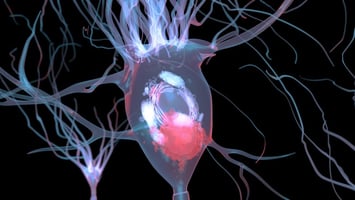Computer Program May Improve Driving by Teens With ADHD

Teen drivers with attention-deficit/hyperactivity disorder (ADHD) who complete a skills-training computer program may be less likely to take long glances away from the road and get into car accidents, according to a study in the New England Journal of Medicine.
“Teens with [ADHD] are twice as likely as neurotypical teen drivers to be in a collision,” wrote Jeffery Epstein, Ph.D., of Cincinnati Children’s Hospital Medical Center and colleagues. “When performing distracting tasks, teens take long glances (≥2 seconds) away from the roadway rather than repeated brief glances between the secondary task and the roadway, a behavior that increases the risk of motor vehicle collision.”
Epstein and colleagues recruited participants aged 16 to 19 with ADHD who had a valid driver’s license, spent at least three hours a week driving unsupervised, and had an average score on the Kaufman Brief Intelligence Test, 2nd edition. Participants were randomly assigned to either the intervention or control groups, both of which involved five 90-minute training sessions. In the intervention group, participants completed the Focused Concentration and Attention Learning (FOCAL+) program, a desktop-based software program that trains teens without ADHD to limit long glances away from the roadway. The authors enhanced the program to include simulator training that issued immediate auditory feedback when long glances occurred. Each training session also included one five-minute drive during which the authors used real-time eye tracking and onboard sensor data to identify when the teens took long glances away from the road. The control group participated in three units of the 2016 American Driver and Traffic Safety Education Association curriculum as well as training drives.
To measure the frequencies of long glances away from the roadway and variations in lane position, participants completed two 15-minute simulated drives at baseline and then at one month and six months after training. Further, a recording system was installed for one year following training in the vehicle that the teen drove most. The system measured long glances away from the roadway, as well as collisions or near collisions.
Seventy-six participants with ADHD were assigned to each group. During the 15-minute simulated driving evaluations, the mean number of long glances per drive was 21.5 in the intervention group and 23.1 in the control group at baseline. One month after training, participants in the intervention group had a mean 16.5 glances per drive, and then 15.7 long glances per drive at six months, compared with 28 and 27 long glances per drive, respectively, in the control group. The standard deviation in lane position, measured in feet, was 0.98 per drive at the one- and six-month follow up in the intervention group and 1.20 per drive for both follow-ups in the control group. Finally, a year after the training ended the rate of collisions or near collisions was 3.4% in the intervention group and 5.6% in the control group.
“Stimulant medication has been shown to improve real-world driving in teens with ADHD,” the authors wrote. “The pharmacologic effects of these medications last approximately 10 to 12 hours. Yet, teens drive and are susceptible to motor vehicle collisions during the late afternoon after school and during the evening, when the effects of stimulant medication are typically waning.”
For related information, see the Psychiatric News article “Medicated ADHD Patients Have Reduced Risk of Motor Vehicle Crashes.”
(Image: iStock/FelixRenaud)
Don't miss out! To learn about newly posted articles in Psychiatric News, please sign up here.






